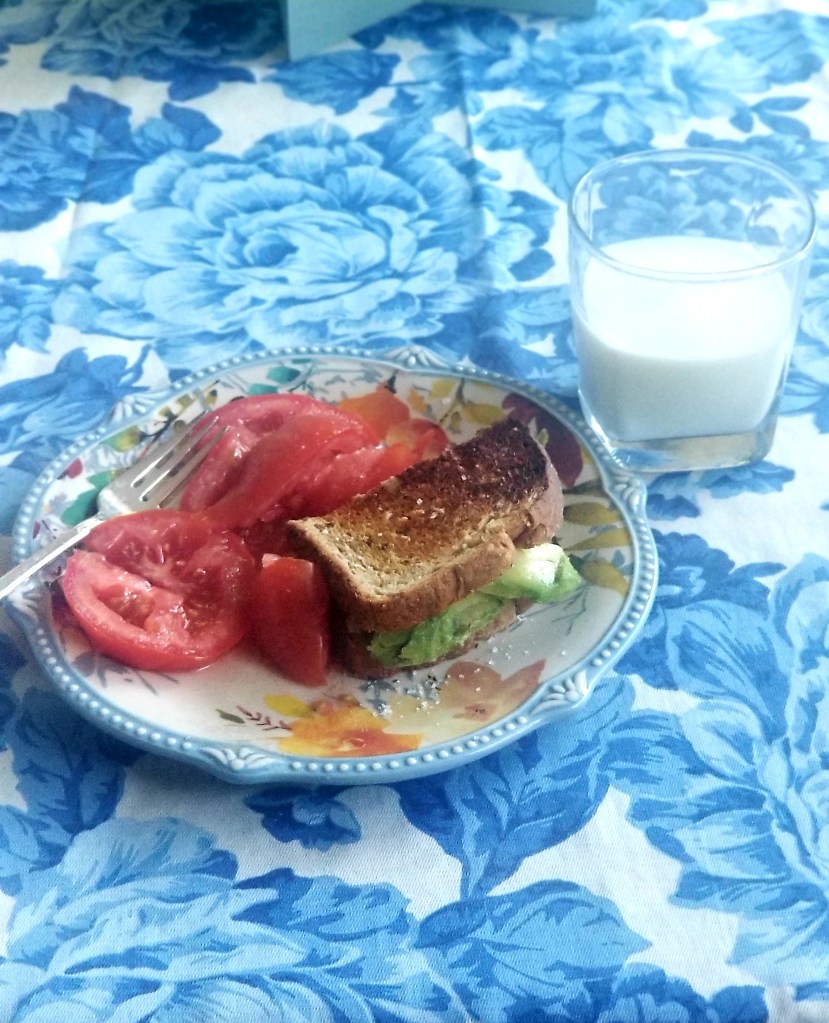I recently did a random post on my Facebook page ( oh heck most of them are random) showing off my breakfast ( food pics,novel, I know)
I had come in from a longer bike ride, hungry, with food on my mind. Not just any food, I wanted avocado, fresh tomatoes and a piece of whole grain bread.
Good carbs…healthy fats….perfect.
As I bantered back and forth with comments from my post one of them said something about loving fruits and veggies for breakfast.
Ah! Rats. In my casual post I really didn’t get technical as to if these items were….fruits? Or vegetables? The comment was later indicated that he just enjoyed both at breakfast, not getting technical. Well by then my mind had already started crafting this post.
So….what are they?
Like many of you, I never deeply pondered what they are, I just enjoy them. But are tomatoes and avocados a fruit or veggie?

Let’s talk about avocados
Not particularly beautiful, but very tasty…….
Avocados are one of the few fruits (yes, technically they’re a fruit, not a veggie) that contain healthy unsaturated fats. These fats help lower undesirable LDL cholesterol when eaten in place of saturated fat. The avocado is considered a fruit because they fit all of the botanical criteria for a berry. They have fleshy pulp and a seed.
Avocados ripen or “soften” after they have been harvested. To speed up the process, place the avocado in a paper bag with an apple or banana for two to three days. The fruit is ready to eat when the stem comes out easily (or, if the stem is gone, when the fruit yields slightly to gentle pressure).
Nutritional info: One serving (about one-third of a medium Haas avocado) provides about 80 calories and nearly 20 different nutrients, many of which are considered heart-healthy, including unsaturated fat, fiber, vitamin K, vitamin E, and potassium.
Now….. on to the tomatoes…
The botanical classification: Tomatoes are fruits.A botanical fruit would have at least one seed and grow from the flower of the plant. With this definition in mind, tomatoes are classified as fruit because they contain seeds and grow from the flower of the tomato.
But wait….there’s more
It’s also a vegetable because someone said it is.
Say what?!
Botanically it’s a fruit. Legally, it’s not. Legally it’s classified a vegetable.
And the origins of that discrepancy lie in a 19th-century Supreme Court case so obscure, many tomato experts aren’t even aware of it.
“Tomatoes have such an outlandish history,” said George Ball, the chief executive at the seed company Burpee. “Most people hear it and are bewildered for life.”
As Ball explains it, fruits and vegetables differ in one major botanical way. A fruit is technically the seed-bearing structure of a plant — and a vegetable can be virtually any part of the plant we eat.
At the time of the court case in question, Nix v. Hedden, fruits and vegetables differed in another big way, as well: Imported vegetables were slapped with a 10-percent tariff upon their arrival in the United States, and imported fruits were not.
When one Manhattan wholesaler — John Nix & Co., owned by John Nix and his four sons — got hit with the tariff on a shipment of Caribbean tomatoes, he disputed the tax on the grounds that tomatoes were not technically vegetables.
The case, filed in 1887, made its way to the Supreme Court in 1893. There, the court disagreed with the Nixes, ruling that people neither prepare nor eat tomatoes like fruits — and that they should be taxed accordingly.
“Botanically speaking, tomatoes are the fruit of a vine, just as are cucumbers, squashes, beans, and peas,” wrote Justice Horace Gray in his 1893 opinion. “But in the common language of the people, whether sellers or consumers of provisions, all these are vegetables.”
So there you go. The Supreme Court of the United States of America ruled them as a vegetable….long ago…..
Bet you learned something new, didn’t you?
About my breakfast….

I’ll leave you with a refreshing summer tomato salad to try.
Your turn
Do you like tomatoes and avocados? What would you say they are? Fruit or veggie?
